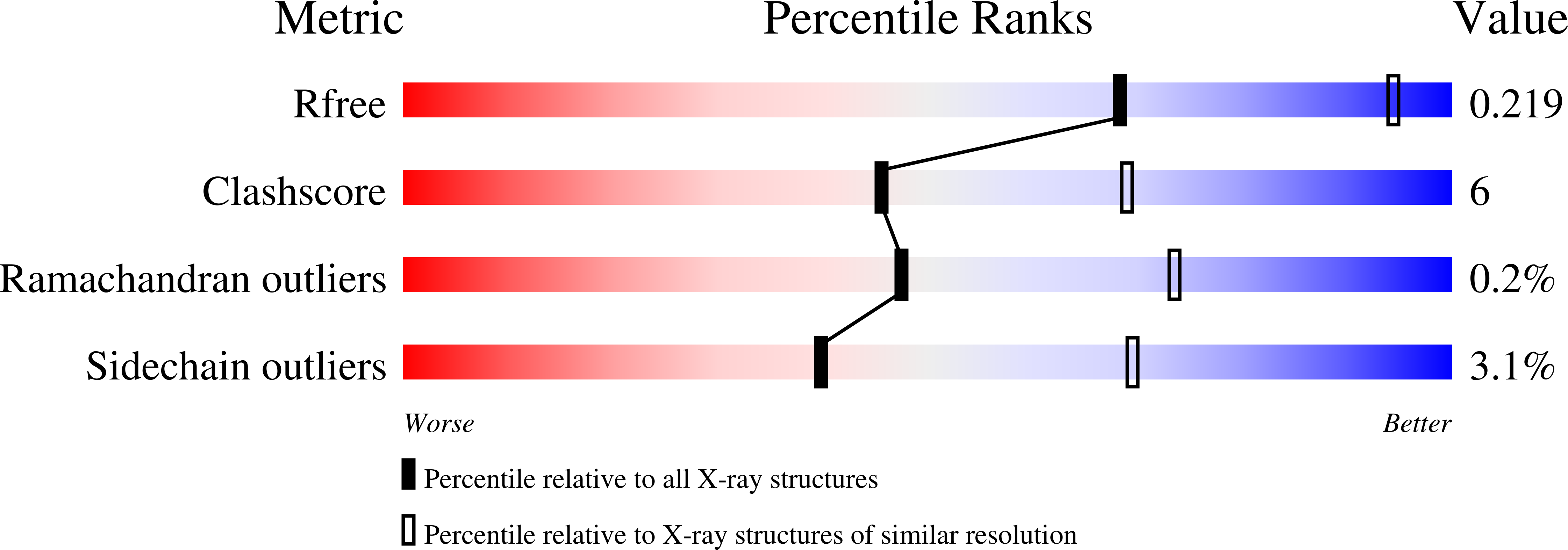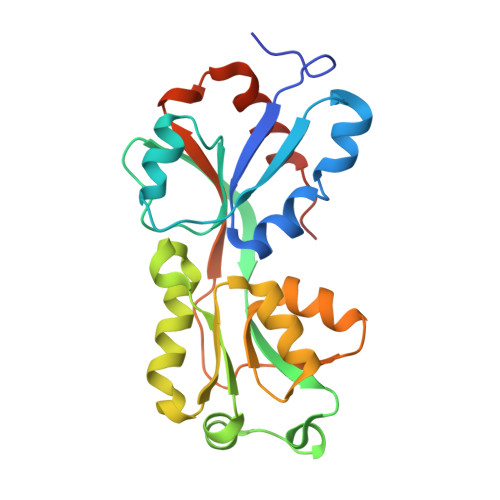Structures of the Inducer-Binding Domain of Pentachlorophenol-Degrading Gene Regulator PcpR from Sphingobium chlorophenolicum.
Hayes, R.P., Moural, T.W., Lewis, K.M., Onofrei, D., Xun, L., Kang, C.(2014) Int J Mol Sci 15: 20736-20752
- PubMed: 25397598
- DOI: https://doi.org/10.3390/ijms151120736
- Primary Citation of Related Structures:
4RNS, 4RPN, 4RPO - PubMed Abstract:
PcpR is a LysR-type transcription factor from Sphingobium chlorophenolicum L-1 that is responsible for the activation of several genes involved in polychlorophenol degradation. PcpR responds to several polychlorophenols in vivo. Here, we report the crystal structures of the inducer-binding domain of PcpR in the apo-form and binary complexes with pentachlorophenol (PCP) and 2,4,6-trichlorophenol (2,4,6-TCP). Both X-ray crystal structures and isothermal titration calorimetry data indicated the association of two PCP molecules per PcpR, but only one 2,4,6-TCP molecule. The hydrophobic nature and hydrogen bonds of one binding cavity allowed the tight association of both PCP (Kd = 110 nM) and 2,4,6-TCP (Kd = 22.8 nM). However, the other cavity was unique to PCP with much weaker affinity (Kd = 70 μM) and thus its significance was not clear. Neither phenol nor benzoic acid displayed any significant affinity to PcpR, indicating a role of chlorine substitution in ligand specificity. When PcpR is compared with TcpR, a LysR-type regulator controlling the expression of 2,4,6-trichlorophenol degradation in Cupriavidus necator JMP134, most of the residues constituting the two inducer-binding cavities of PcpR are different, except for their general hydrophobic nature. The finding concurs that PcpR uses various polychlorophenols as long as it includes 2,4,6-trichlorophenol, as inducers; whereas TcpR is only responsive to 2,4,6-trichlorophenol.
Organizational Affiliation:
Department of Chemistry, Washington State University, Pullman, WA 99164-4630, USA. robert_hayes@wsu.edu.














